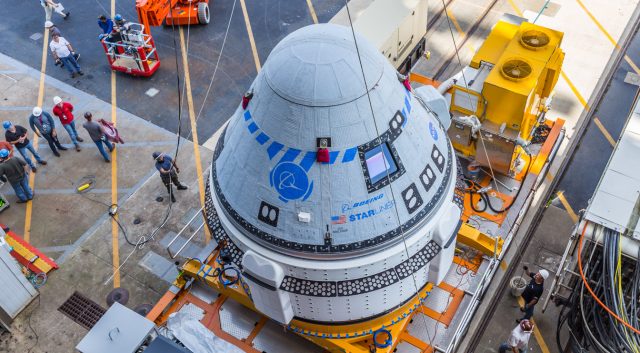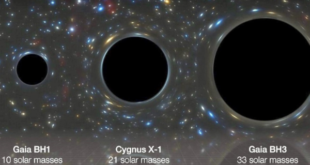
Boeing has been working with NASA to explore space for decades, which is why it was so surprising to see the company’s much-lauded CST-100 Starliner crew capsule stumble on numerous occasions. After last year’s canceled test flight, NASA and Boeing confirm Starliner is ready to take another swing at the validation mission it failed way back in 2019, reports Ars Technica.
The Starliner is part of NASA’s Commercial Crew Program, which settled on bids from Boeing and SpaceX several years back. SpaceX developed a crewed version of its reliable Dragon spacecraft, which has allowed it to become the sole provider of human transport services for NASA as Boeing has struggled to get Starliner off the ground. So how did we get here?
Initially, it looked like Starliner would get NASA certification before SpaceX, but then the issues started cropping up. There was a fuel leak in summer 2018 that started a cascade of delays, culminating in the disastrous Orbital Flight Test (OFT) in December 2019. The spacecraft suffered a software error on launch, which led to it getting stuck in the wrong orbit, and unable to meet up with the International Space Station as planned. A second glitch during reentry nearly caused the engines to misfire, which could have destroyed the spacecraft. Boeing had addressed these errors and was gearing up for a rerun dubbed OFT-2 in fall 2021, but stuck fuel valves scrubbed that one. Boeing and NASA decided to take Starliner back to the production facility after finding 13 of 24 oxidizer valves were not responding.
The #AtlasV will receive its precious cargo today as the @BoeingSpace CST-100 #Starliner spacecraft is transported to ULA’s Vertical Integration Facility and lifted onto the rocket. Launch of the Orbital Flight Test-2 is May 19 at 6:54pmEDT (2254 UTC). https://t.co/VIynIdVS23 pic.twitter.com/1u87eYpRNA
— ULA (@ulalaunch) May 4, 2022
Now, Boeing says the issue has been identified and fixed, and it was indeed related to humidity as initially believed. The dinitrogen tetroxide oxidizer was loaded into the spacecraft weeks before the test, but moisture infiltrated the system as Starliner sat at Cape Canaveral waiting for the big day. Humidity in Florida? Who would have thought? The water and oxidizer reacted to create nitric acid, which began corroding the aluminum valves and prevented them from working. The valve design has not been altered as a result, but Boeing has added new seals that should prevent moisture from getting into the propulsion system. In addition, it will not fuel Starliner as far in advance in the future.
In the coming days, Starliner will be stacked on a United Launch Alliance Atlas V rocket for OFT-2. The goal of this uncrewed mission is to prove that Starliner can autonomously reach orbit, rendezvous with the International Space Station, and then return safely to Earth. If it can do that, NASA will have a crewed test flight later this year with three astronauts onboard. That would give NASA two private launch platforms to transport crew to and from the ISS, but another failure could spell doom for Starliner.
Now read:
Subscribe Today to get the latest ExtremeTech news delivered right to your inbox.
© 1996-2022 Ziff Davis, LLC. PCMag Digital Group
ExtremeTech is among the federally registered trademarks of
Ziff Davis, LLC and may not be used by third parties without explicit permission.
We strongly encourage you to read our updated PRIVACY POLICY and COOKIE POLICY.
 #Bizwhiznetwork.com Innovation ΛI |Technology News
#Bizwhiznetwork.com Innovation ΛI |Technology News



